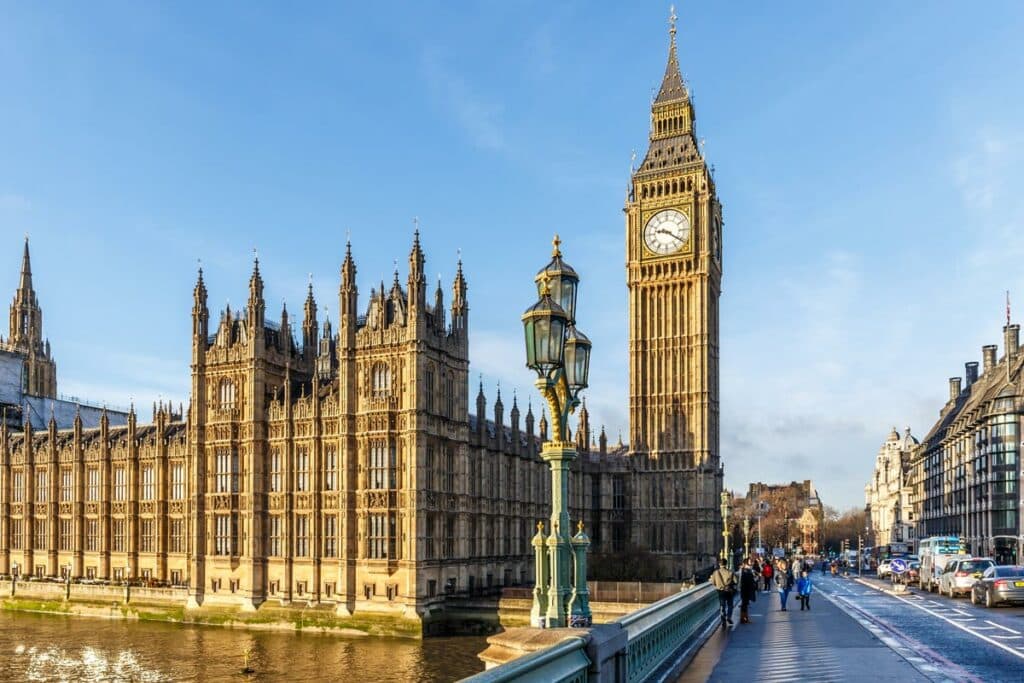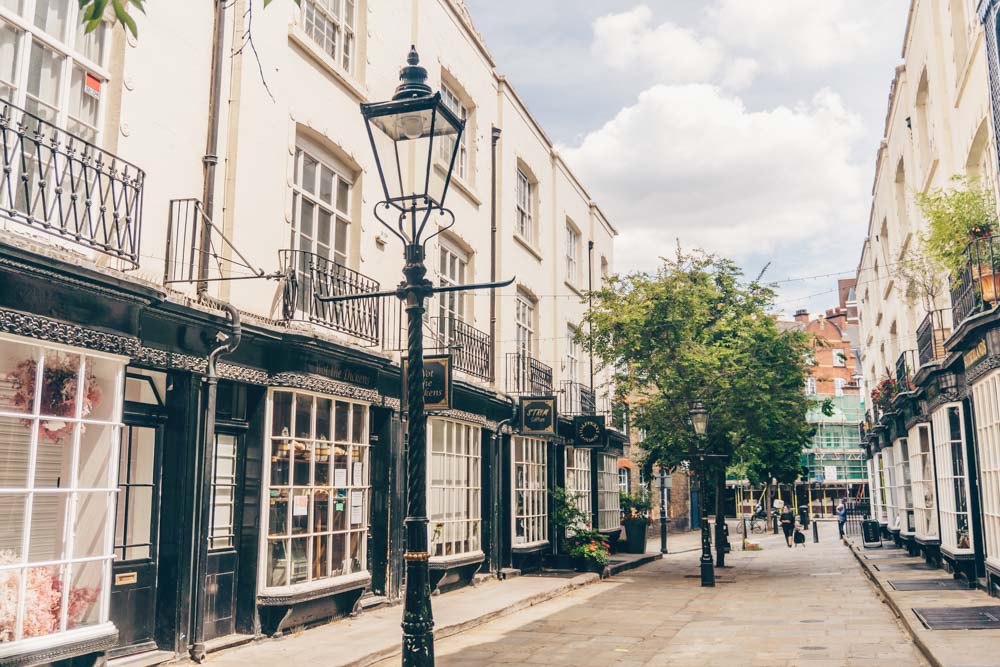Step back into London’s past and discover St Pancras Old Church with this guide. From grave-ridden trees to some very famous faces, here’s what you need to know about the old St Pancras Church.
Next to the St Pancras International station is a beautiful patch of greenery called St Pancras Gardens. As well as the Mausoleum of Sir John Soane, the garden is home to St Pancras Old Church.
What makes this place so special? Well, like many churches in London, St Pancras Old Church has a long and fascinating history.
Let’s explore.
Why Visit St Pancras Old Church?
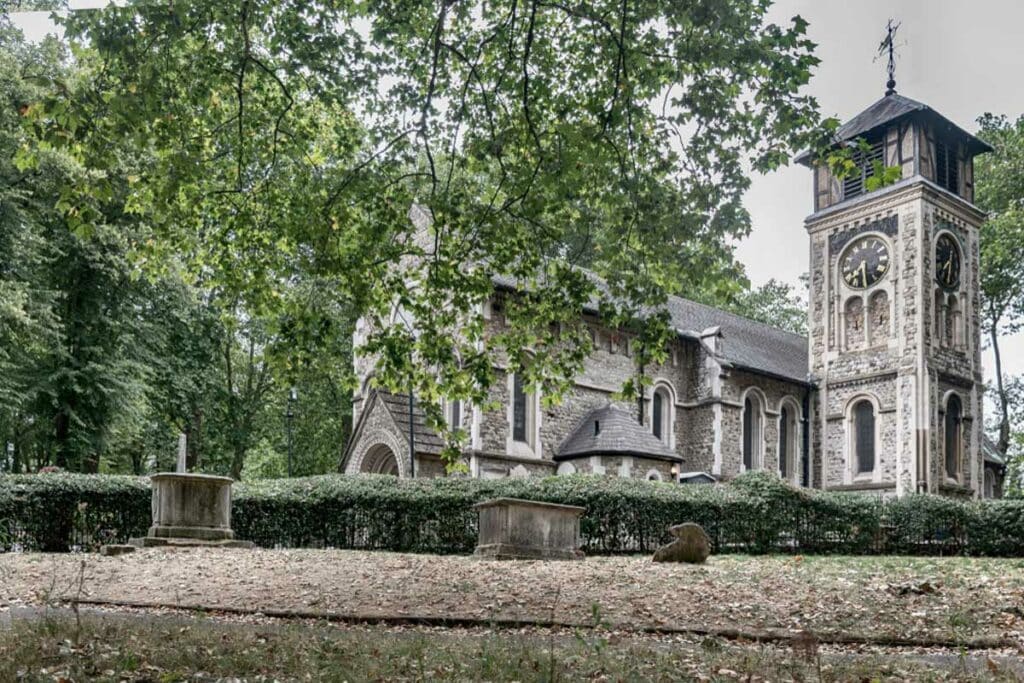
St Pancras Old Church is situated in one of the most beautiful settings in London, at the southern end of the leafy St Pancras Gardens. Which, FYI, makes a charming space for a few hours of tranquillity away from the hustle and bustle of one of London’s busiest transport hubs.
Famous Graves
Several of London’s most renowned Roman Catholics rest in the church’s graveyard, including several immigrants: Johann Christian Bach – the 18th child of Johann Sebastian Bach, William Franklin (the illegitimate son of Benjamin Franklin) and, initially, husband-and-wife writers Mary Wollstonecraft and William Godwin.
In 1877 the Burdett Coutts Memorial to Lost Graves was built as gravestones were cleared to make space for the northern half of St Pancras Gardens. The names of the lost graves are listed on the monument.
An Iconic Design
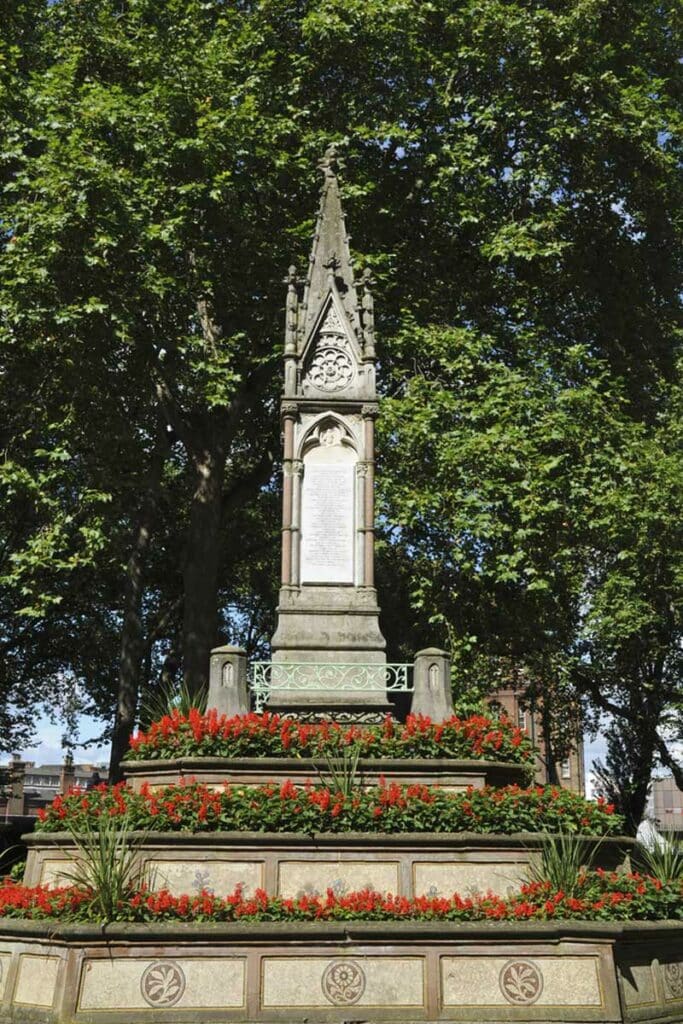
As well as being one of London’s churches with the richest history, its current design uses much of the material from the 13th-century original building. Still, the design is very much changed, with some neo-Gothic elements in the arch designs and the classic round window above the main entrance.
Unlike many London churches, it does not have a large tower rising high over the local landscape, although there is a clock tower around the same height as the main church.
In the 19th Century, some treasures dating back as far as the 6th Century were found, having been buried from Cromwell’s marauding army during the English Civil War, including a 6th Century altar stone. That in itself is worth a visit!
The Hardy Tree
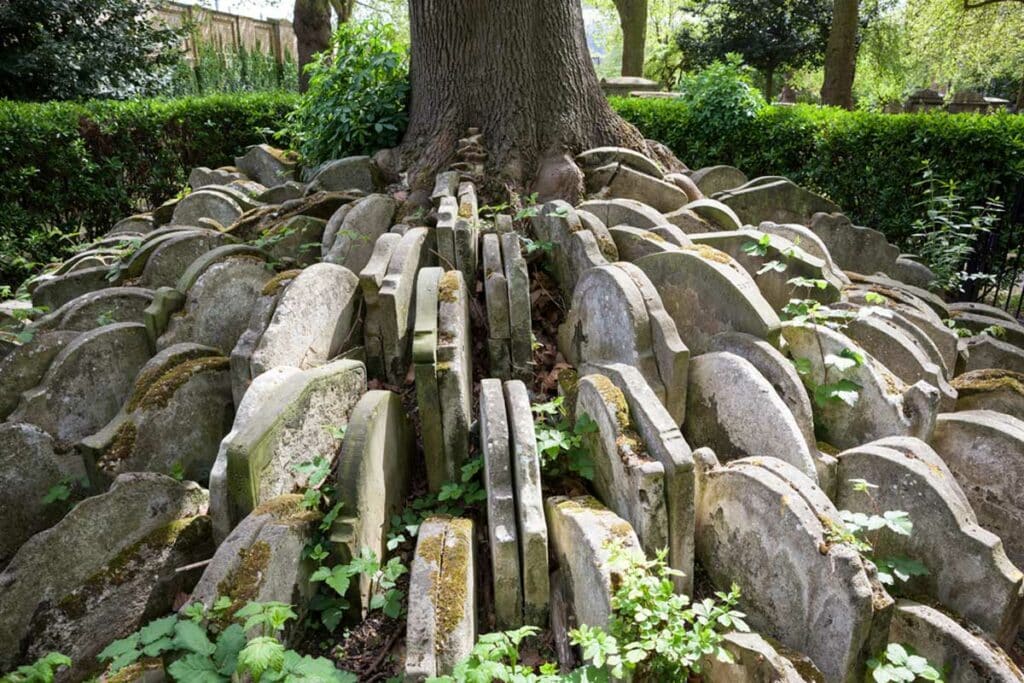
While The Hardy Tree might have fallen down during a recent storm (RIP), it was one of London’s strangest sights – and you can still see its remains.
Perched in the middle of the garden, the huge tree was ringed by old gravestones that radiated from the tree’s trunk.
The history of the Hardy Tree is a pretty grim one – back in Victorian times, railway companies cut a scythe through the area – including through the graveyard of Old St Pancras church – leaving a trail of decaying corpses behind them. Yes, really.
In a random twist of fate, the poet and novelist Thomas Hardy, who at that point was an apprentice junior architect, was given the job of cleaning things up. He arranged the coffins in such a way that a tree grew through the middle, its roots tangled around the different gravestones.
Cool? Yes. Gross? Totally.
Read Next: The Hardy Tree
The History of St Pancras Old Church
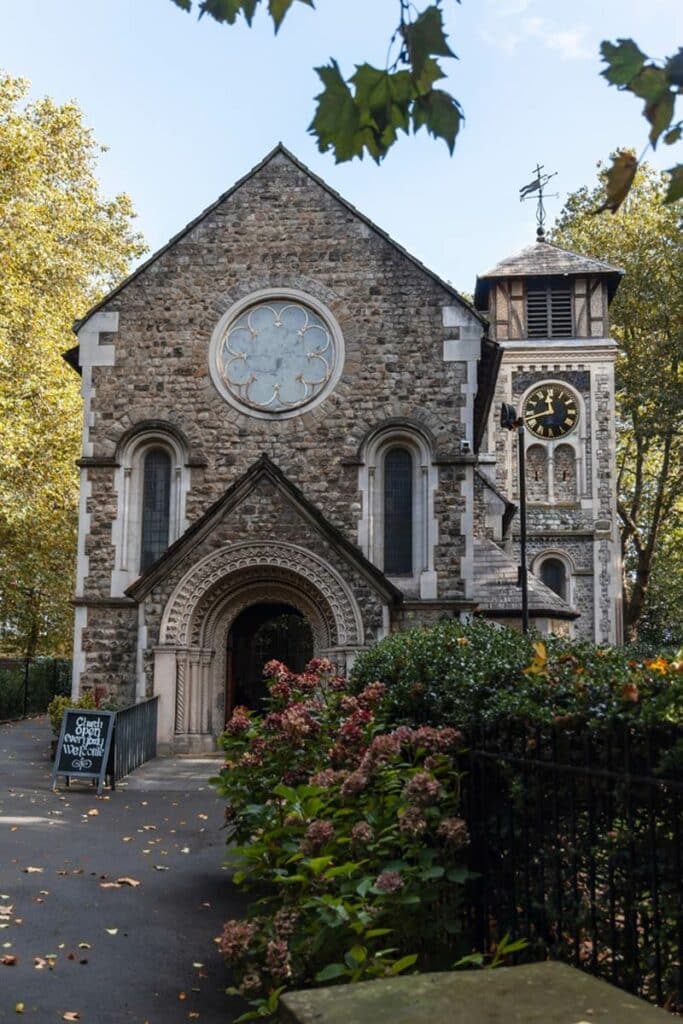
The finding of the altar lends some credence to the church’s claim to being one of the most ancient sites of Christian worship in England, which many feel dates back to the 4th Century AD.
In circa 300AD, St. Pancras was decapitated after converting to Christianity in Turkey aged 14, refusing to renounce his faith and being executed.
A church was first erected on the site in the 11th or 12th Century AD, with signs of the original building still visible on the northern wall of the nave where some Norman masonry is visible.
Indeed, the Domesday Book of 1085 records Walter, a Canon of St Paul’s, holding a hide at St Pancras. The church retains a relationship with St Paul’s Cathedral to this day, almost 1,000 years later.
Fulcherius is the first known vicar of St Pancras Old Church, dating from 1181, earning a pension of 2 shillings. A 13th Century survey of the church recorded a mass book with musical notes, a calendar, psalters, vestments, candlesticks and a white silver chalice.
The church served 36 houses in the area, including Adam de Basing, who became Mayor of London in 1252.
Falling into Disrepair
Another survey in 1297 noted that animals befoul the “churchyard” and that the building’s roof urgently needed repair.
Despite this, the church remained in use throughout the next 350 years, surviving the reformation under Henry VIII, and was noted to have been a favourite site of Elizabeth I, who continued to allow Latin mass in the church throughout her reign.
In November 1642, Parliament ordered that the deserted Church of St Pancras be used as lodging for 50 soldiers in Cromwell’s army. Before this, the varying treasures of the church were buried beneath the tower, where they would remain until the church’s rebuilding more than 200 years later.
John Norden, a topographer, noted in 1593 that “Pancras Church standeth all alone, as utterly forsaken, old and weather-beaten….” While a survey taken in 1650 remarks that the church is standing “in the fields remote from any houses in the said parish.”
Legend has it that the vicar and parishioners regularly abandoned worship in the church to escape the rising waters of the River Fleet.
As time passed, the church’s primary use was as a burial ground and for quick weddings. Famous writer Mary Wollstonecraft, pregnant, married William Godwin at the church in 1797 before being buried after her death the same year.
Disuse and Rediscovery
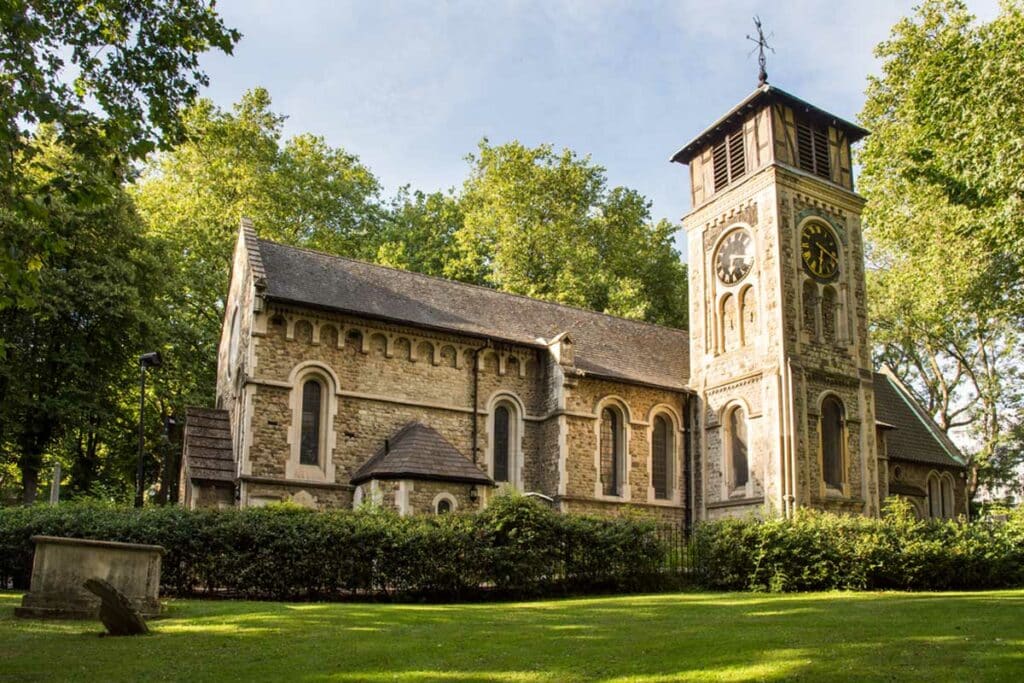
By 1840, the church was effectively little more than a ruin, having been usurped by St Pancras’ new church on Euston Road. With the industrial expansion of London building pace, the church underwent a total restoration in 1847 and 1848.
Architect A.D. Gough sought to renovate the church in line with its original 12th Century foundations, adding a new tower on the south wall. During excavations, workers found the treasure trove of valuables dating back to the Elizabethan Age and before.
Further renovations took place in 1888 and 1925 internally to restore the plaster ceiling and remove the side galleries, while 1948 saw additional repairs following bomb damage from the Second World War.
In June 1954, St Pancras Old Church was designated a grade II listed building. Nowadays, the church has a chaplaincy at St. Pancras Hospital.
St Pancras Old Church: Practical Information
Address: St Pancras Gardens, Pancras Road, London, NW1 1UL
Opening Times: 9:30 am to 5 pm daily (depending on concerts)
Tickets: Free

